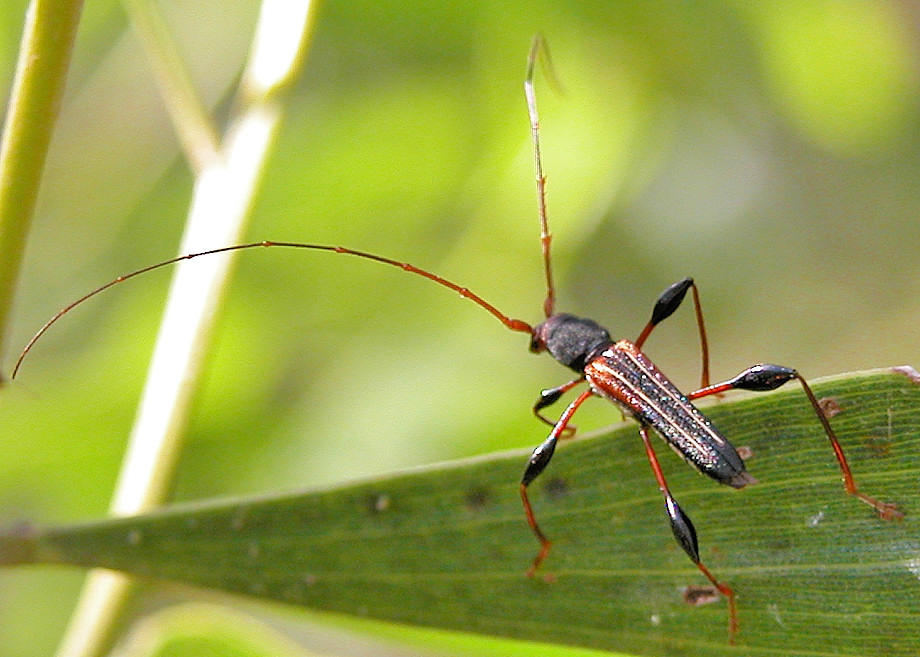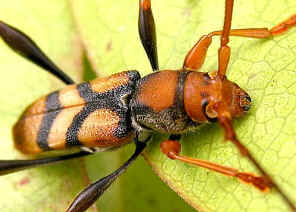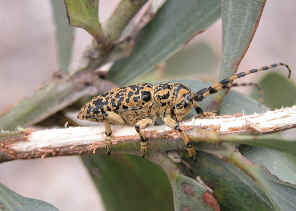- This page contains pictures and information about Longicorn Beetles, family
Cerambycidae that we found in the Brisbane area, Queensland, Australia.
-
 -
- All members in this family Cerambycidae are commonly called Longicorn Beetles. They are also
known as Long-horned Beetles. They are from small to very large in size. They have very
long antennae, typically 11 segmented. The antenna is often more than
two-thirds, some are even three times as their body
length. Their antenna can be directed
backwards over body. The compound eyes are
notched at the base of the antennae. They have apparently four segments on each tarsus.
-
-

 
- 11 segmented
antennae
Notched compound eyes
Feeding on stem
-
- Adults are active fliers. The body usually elongated and cylindrical in
shape. Their legs are medium long. They have obvious strong mandibles for
chewing, some feed on flowers.
-
- Longicorn Beetles lay eggs in cracks of
barks or under barks. Most Longicorn Beetle larvae are wood borers. Usually
they are host specific of living or dead trees, usually infest severely on weakened
trees, dying or felled logs. The life cycles are from few months to more than
a year.
-
- Longicorn Larvae are also known as Round-headed
Borers. They are hardly be seen for they live inside wood.
They are usually white grub looks with large dark brown
head and strong mandibles. They are slightly tapering towards the end. Some
species tunnel deep into the heartwood and some bore largely under the bark.
They pupate inside the wood as well. When hatch, the adults cut emergence holes through
the bark.
-
- In Australia we have four longicorn subfamilies.
Cerambycinae and Lamiinae are common while Prioninae and Parandrinae are rare. We found different species of Longicorn Beetles
and listed in the following subfamily pages. As you can see there is quite a bit to learn about the Beetle. If it really interest you might want to switch your study course from a
online mba to checking out a park ranger job or even studying up on Botany could help.
-
-
- Longicorn Beetles in subfamily
Cerambycinae can be distinguished by the head prognathous (with jaws
forwards). Most of them have slender body. Some of them are colourful.
-


  
 
 


 -
- Longicorn Beetles in subfamily
Lamiinae can be distinguished by the head hypognathous (with
jaws down). Most of them have stout body and brown in colours.
-
 







 



-

-
- Reference:
- 1. Insects
of Australia, CSIRO, Division of Entomology, Melbourne University
Press, 2nd Edition 1991, p 672.
- 2. A guide to the Genera of Beetles of South Australia Part.7 - Matthews, E.G. & Reid
C.A.M.Adelaide, Eureca Corporate Group. 1997.
- 3. Northern
Territory Insects, A Comprehensive Guide CD - Graham Brown, 2009.
[ Subfamily Cerambycinae ] [ Subfamily Lamiinae ] [ Longicorn Beetles not identified yet ]
|